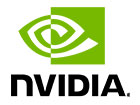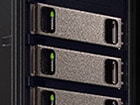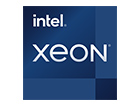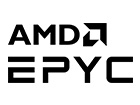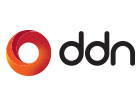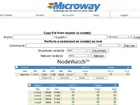Microway was incorporated in July, 1982 to develop, produce, and market software for the Intel 8087 coprocessor in the IBM PC.
Widely credited with introducing numeric coprocessors to the general market, Microway became the primary source and recognized industry leader for numeric coprocessors and supporting software. Today Microway’s reputation is based on excellence in designing and manufacturing high density Linux WhisperStations and clusters. Trademarks include Microway, Navion, NodeWatch, NumberSmasher, Screamer, SuperCache, NDP, flickerFIXER, and Quadputer. Despite a wide-reaching influence over a vast and dynamic marketplace, Microway remains a small woman-owned business, and a Massachusetts corporation. Microway’s GSA contract number is GS-35F-0431N.
2020
In May Microway becomes a launch NPN Deep Learning partner for the DGX A100 AI System. Shortly thereafter Microway delivers the first DGX A100 systems to a higher education institution, University of Florida.
After successful deliveries of DGX Systems in 2019 to Milwaukee School of Engineering, Oregon State University, Clemson University, and Stevens Institute of Technology, Microway is for a second time named NVIDIA NPN Americas Higher Education Partner of the Year.
2019
Early in the year, a major cluster with over 10,000 compute cores is delivered to a defense customer. Microway delivers 2nd Generation Intel Xeon Scalable Processor “Cascade Lake-EP” clusters, servers, and workstations time to market with their launch.
At the 2019 NVIDIA GPU Technology Conference, Microway is named the 2018 NVIDIA NPN HPC Partner of the Year. By summer, Microway experts have installed DGX-2 deployments at Clemson University, Oregon State University, and a major national laboratory.
Our technical team architects, integrates, delivers, and deploys a groundbreaking installation for AI education and research built on the DGX-POD architecture for Milwaukee School of Engineering.
At SC19, Microway and ScaleMatrix debut a new “AI Anywhere” Solution for rapid AI Deployment at any scale and any location—regardless of datacenter capability. The solution includes DGX Systems integrated by Microway + DDC turnkey rack and cooling infrastructure.
2018
Microway is named to the Inc 5000 list: as one of the 5000 fastest growing companies in the US. Soon after launch in March 2018, Microway is approved as one of a select few NPN Elite Deep Learning partners to sell the DGX-2 AI System— and delivers one of the first DGX-2 systems in North America: to Oak Ridge National Laboratory. DGX-2s are also delivered and deployed at BYU for science & education and for the clinical environment at UT Health Sciences.
Microway once again achieves Intel Platinum Technology Provider status and is designated an Intel HPC Data Center Specialist.
2017
For over the 10th straight year, Microway achieves Intel Platinum Technology Provider status. Our first AMD EPYC Solutions are delivered. NVIDIA launches Tesla V100 and Microway delivers many of the first Tesla V100-based servers in North America.
Microway becomes a launch partner for NVIDIA DGX Station as well as upgraded DGX-1 solutions with Tesla V100. After explosive delivery growth, Microway becomes one of the largest sellers of NVIDIA DGX Solutions in North America.
2016
100Gb Mellanox EDR InfiniBand is first delivered in Microway NumberSmasher Clusters. The first NumberSmasher cluster and Microway workstation solutions with the Xeon Phi Processor (Knights Landing) and Omni Path Fabric ship.
NVIDIA launches the DGX-1 Deep Learning Appliance, and Microway becomes one of the first NPN Partners permitted to deliver DGX-1. Microway is elevated to an NVIDIA NPN Elite Deep Learning Partner.
2015
Microway delivers Tesla K80 in large volumes to customers in Defense, Academia, and Government. The company joins the OpenPOWER Foundation and becomes an IBM Business Partner. GPU Accelerated Systems for AI and Deep Learning become a substantial portion of Microway’s customer shipments.
2014
Microway WhisperStation is named a Desktop Engineering Editor’s Pick with the praise at the time of “the WhisperStation wasn’t just the fastest system we’ve ever tested, it literally blew away the competition.”
The first Xeon E5-2600v3 “Haswell” servers ship to customers. Microway debuts QuietQuad WhisperStation, one of the first quiet 4-socket workstations on the market.
2013
Microway introduced its first x86 coprocessor servers and clusters with Xeon Phi 5110P in January, 2013. These systems scaled highly-parallel x86 codes onto the new Many Integrated Core (MIC) architecture. The company presented its Whisper BioWorkgroup at BioIT World 2013 and earned a nomination as a Best of Show Finalist in IT Hardware & Infrastructure. Microway debuted new NVIDIA Maximus 2.0 certified WhisperStations delivering concurrent design and simulation performance.
2012
Microway SimCluster was named Editor’s Pick of the Week in Desktop Engineering Magazine for its targeted workgroup cluster configuration and innovative “Try Before You Buy” program. Microway introduced new Xeon E5-2600 “Sandy Bridge” series powered workstations, servers, and clusters. New NumberSmasher platforms delivered innovations such as PCI-E Gen3 support, AVX support, 256bit floating point units and a 30% increase in memory bandwidth. Microway shipped clusters, servers, and WhisperStations with NVIDIA Tesla “Kepler” GPUs. These systems were some of the first to market with the new SMX, Dynamic Parallelism, and HyperQ features and delivered 2X the previous generation’s performance per watt. WhisperStation- Maximus earned NVIDIA Maximus certification for verified design and simulation performance. Finally, Microway delivered its first clusters with Mellanox ConnectX-3 FDR (56Gb) InfiniBand technology.
2011
Microway’s BioStack-LS™ Cluster was named the 2011 Best of Show Winner in the IT Hardware & Infrastructure category at BioIT World Conference and Expo. The panel of experts rewarded BioStack’s modular, extensible workgroup GPU cluster hardware and easy to use Bright Computing cluster management. Microway’s Tesla Fermi GPU computing solutions were named the Best New Technology at the Life Sciences Technology Insight Summit. The company’s SimCluster “Free Trial” and “Test Drive” programs launched to provide remote GPU benchmarking resources to customers. Finally, Microway beat big OEMs to market with Navion Opteron 6200 series solutions with the new “Bulldozer” core architecture.
2010
Microway launched Intel Xeon 5600 (“Westmere”) series processor-based WhisperStations, Servers and InfiniBand Clusters and added ConnectX-2 QDR InfiniBand support. New, high-density NVIDIA Tesla-powered platforms shipped to customer deployments including the first 8 GPU OctoPuter, the NumberSmasher 1U GPU Server, and the NumberSmasher 4U GPU Server These systems were some of the first in the industry to reach customers with the breakout performance provided by NVIDIA’s new Tesla ‘Fermi’ architecture. They dramatically improved double precision floating point performance, included the first ECC memory protection on the GPU, and a 2X increase in performance per watt. Finally, Microway increased core density by 2X by launching Navion 8 and 12-core Opteron 6100 based clusters, servers, and WhisperStations. Soon, Microway’s Navion powered clusters consumed nearly ½ the space per core.
2009
Microway introduced Intel Xeon 5500 (“Nehalem”) series workstations and HPC clusters to its quad core product line. In keeping with its green initiative, Microway’s Intel platform solutions maximized both energy efficiency and performance density with over twice the performance of previous systems and 30+% power savings. Combined with 93% efficient power supplies, Microway clusters, servers and WhisperStations consumed 30% less power and generated less heat. Microway shipped their FasTree 36 port QDR InfiniBand switches and ConnectX TriCom HCAs, improving HPC interconnect latency. Many customers purchased Personal Supercomputers with one to four NVIDIA Tesla C1060 GPUs and added S1070 Quad-GPU servers to their computational cluster designs.
Significant quad-core clusters were delivered to universities including: Columbia, Georgia Tech, Harvard, New Hampshire, Mississippi, Northwestern; several US Government Research Laboratories; and corporations including Schlumberger Doll and Tech-X.
2008
Microway designed TriComX, an InfiniBand HCA based on new Mellanox ConnectX technology – bringing dramatic improvements to HPC interconnect latency. In conjunction with this, new versions of MPI Link-Checker were introduced that improved compatibility with larger HPC workflows. The company also began implementation of AMD quad-core Opteron processors in several large clusters. Microway became an Nvidia PartnerForce Premier dealer, delivering clusters and workstations integrating very high end graphic cards and leading edge Tesla GPUs with CUDA development software. Also introduced was a dual server solution in a 1U package with InfiniBand for applications requiring dense 4P, quad-core Intel or Opteron platforms.
Significant quad-core clusters were delivered to Atmospheric Prediction, Factory Mutual Insurance Company, MIT, New York State Department of Health, and University of Arizona. Trade shows attended included HPCC Newport, Linux/Open Source on Wall Street and NEPCON/OEM East in Boston.
2007
Microway delivered Intel Quad-Core Xeon-based clusters and storage servers. The company further developed its Opteron-based ServaStor storage servers with Lustre Parallel File Server software and InfiniBand hardware. Also the company announced its affiliation with RPU manufacturer DRC. Microway exhibited at trade shows including HPCC Newport, HPC on Wall Street, Linux/Open Source on Wall Street, SIFMA Technology Conference in New York and Supercomputing07 in Reno. Large clusters and storage servers were delivered to Alabama Supercomputer, CSC, Georgia Institute of Technology, LLNL, NASA Glenn, University of Massachusetts and University of Georgia.
2006
Microway announced MMDS, Microway MPI Diagnostic Suite–a combination of MPI Link-Checker and FasTree. To further enhance the reliability of clusters in the field, Microway implements and installs MPI Link Checker and FasTree on clusters. This software product checks all links on the cluster and provides a thorough understanding of the interconnect speed and highlights issues with MPI transfers.
2005
Microway debuts its dual core Opteron based clusters and advanced WhisperStation™ ultra quiet workstation. Also the company announced its affiliation with PathScale, as a lead partner to market its InfiniPath™ interconnect. In mid 2005, Microway released its FasTree product line of modular, stackable InfiniBand switches. The company has been awarded large cluster contracts by Boeing, Brookhaven National Laboratory, Emory University, NIST, Naval Research Laboratory, and University of Louisville.
2004
Microway released it’s quad and 8 way Opteron SMP platforms in a 4U configuration with redundant power supplies and multiple removable hard drive bays. Microway also announced the availability of the commercial version of MPI Link-Checker, the diagnostic tool for debugging interconnects in large clusters. Microway was awarded significant cluster contracts with Harvard University (used for modeling the origins of the universe) and the University of New Hampshire (used for earth science and space research). Both clusters employed 64 bit Opteron NavionT compute nodes and fast interconnects.
2003
Microway adds Navion™ and NumberSmasher®-64 product lines. The Navion product line includes servers and clusters based on the AMD® Opteron™ processor. The NumberSmasher®-64 includes dual and quad processor servers and clusters based on Intel’s Itanium® 2 procssor. Microway Navion Clusters were awarded “Best 64-Bit Turnkey Solution” at Clusterworld. Microway is granted GSA contract number is GS-35F-0431N.
2002
Microway delivers NodeWatch™, its remote cluster environmental monitoring and control hardware/software combination. Microway announces CW Beowulf Cluster Series, powered by Platform™ Computing software. Intel chooses Microway as one of five Premier Partners to offer the Itanium®2 introduction. Microway’s Chairperson is chosen as a member of Intel’s Premier Partner Advisory Board. Additionally, Microway designs and manufactures custom 1U Rack chassis with “PUSH/PULL” forced air cooling for dual AMD® Athlon™ and dual Intel® Xeon™ configurations. The Xeon 1U offers 3 PCI slots and a 460W power supply, unique to the industry.
2001
New technology including a dual Alpha in 1U configuration for compact clustering and Scyld Beowulf cluster management software are introduced. Microway starts delivering HPTC solutions to the biotechnology and genome processing markets.
2000
The company manufactures its proprietary rack-mount chassis which houses four processors on two motherboards, for Beowulf clustering applications. This chassis provides the highest density configurations possible. The company also introduces a 4U custom-designed rack-mount chassis for the 264DP dual Alpha. This chassis features an N+1 redundant power supply.
1999
New technology offerings include hardware and software products based on the state of the art 21264 EV6 Alpha processor, plus Beowulf configurations with PVM and MPI.
1998
Microway releases its 64 bit NDP Fortran compiler for Linux and 667 MHz, 8 MB Cache Alpha “Screamer” motherboards, integrated in rack-mount systems and custom workstations.
1996-1997
Industry demand prompts Microway to expand its offerings of Alpha-based motherboards and custom workstations. Markets for these include UNIX, Linux and NT File Servers, RAID Servers, 3D design, video animation, internet applications and high performance numerics applications.
1995
Microway designs workstations and compilers based on the Digital Alpha RISC processor.
1993-1994
The company adds a four processor “QuadPuter-860” board plus a new line of Intel® Pentium® based File Servers. Software additions include NDP Fortran-90, LAPACK, a linear algebra package and NDP FFT, a DSP package.
1992
Higher speed processors are added to Microway’s workstation product line, compilers for OS/2, and customized versions of its compilers for the Japanese NEC and Okidata computers.
1991
Microway introduces NDP compilers for Windows, and a line of 80486-based custom workstations.
1990
Microway ships its new Number Smasher-860 and compilers. Also released is FASTCache-SX accelerator which allows users to run Windows 3.0 in 386 Enhanced Mode on their old ATs.
1989
The company introduces compilers for the 80486 and begins a development program for the Intel i860 RISCprocessor.
1988
Another mark is made as Microway becomes the first company to release 80386-based, protected mode compilers for DOS, UNIX, and XENIX. These include FORTRAN, Pascal, and C compilers with full support for the 80387 and Weitek 3167.
1987
Microway announces a line of transputer-based parallel processing boards, high speed numeric coprocessor cards based on the Weitek 1167, and flickerFIXER, an enhanced video graphics board for the Amiga 2000 and 2500.
1986
Microway designes 287Turbo, which doubles floating point performance in the IBM PC AT.
1985
The industry takes notice as Microway launches its NumberSmasher, which accelerates the speed of the PC to an unprecedented 12 MHz and also provides one megabyte of memory for DOS applications. The same year, a subsidiary is established in Europe.
1983-1984
Microway introduces compiler libraries, mathematical software packages and RTOS, a port of Intel’s iRMX real time operating system for the PC.

